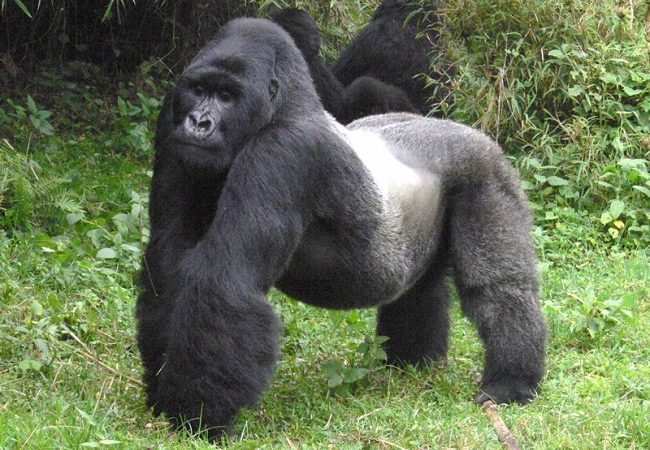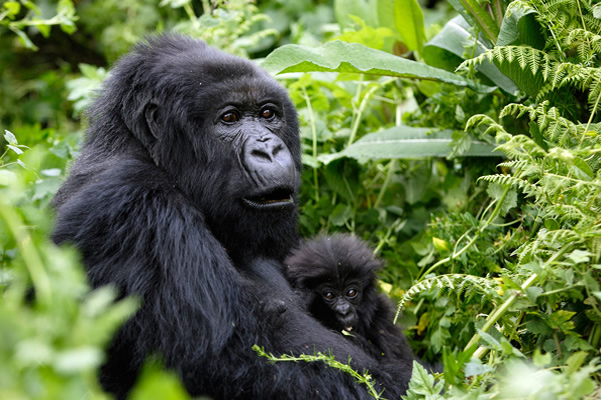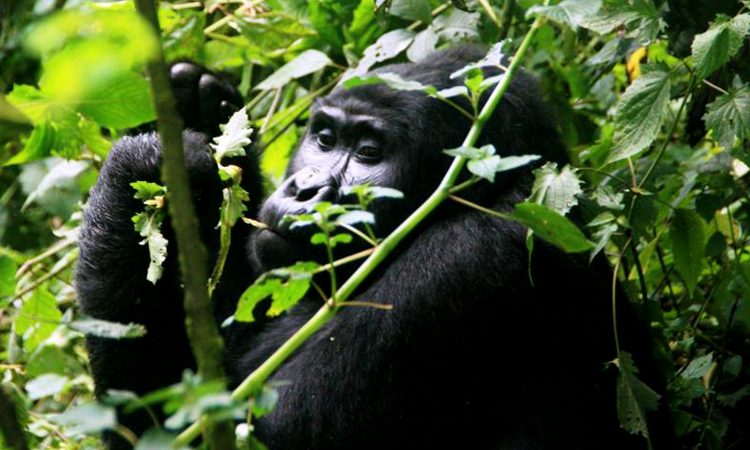
Facts About Mountain Gorillas
Facts About Mountain Gorillas : Mountain gorillas are a major attraction for the Eastern African countries and these mountain gorillas are only found in the African continent. The mountain gorilla safari in any of the destinations is a life changing and one the greatest African safaris one could opt to engage in or book and this is majorly because of what makes the mountain gorillas stand out.
The mountain gorillas are a type of gorilla species and there are four types of gorillas. The four types are the Cross River gorillas, the Eastern lowland gorillas, the lowland gorillas and the famous mountain gorillas.
The Mountain gorillas are endemic species to the Albertine rift and can be visited in three countries but four destinations and these are in the Virunga national park of Congo, the Volcanoes national park of Rwanda, the Bwindi Impenetrable forest national park and the Mgahinga gorilla national park of Uganda. The mountain gorillas can only be visited in the wild unlike the other gorilla species that are found in some zoos worldwide. This means that these are the only countries you can visit the mountain gorillas in the wild. The mountain gorilla can only survive in the wild and will not survive in captivity.
The mountain gorillas definitely differ from the other gorilla types in physique, size, lifestyle and a number of things that you may notice once you visit all the other four gorillas. The mountain gorillas can be identified by their thick pure black fur which is different from the western and eastern lowland gorillas that are a bit brown.
The mountain gorilla differs physique wise from the lowland gorillas whose arms are shorter as compared to the mountain gorillas. The mountain gorilla numbers have risen from about 1,000 when they were listed as critically endangered to now just endangered on the IUCN list. Major Key facts of the mountain gorilla are being addressed in this article. There are currently 1,063 mountain gorillas according to the last census carried out and this growth has been factored by the conservation efforts of the stakeholders of the national parks that are home to the mountain gorillas.
Mountain gorillas live at high altitudes of about 4,500 meters and usually at mountain slopes which implies you should expect some hiking on this activity. The mountain gorillas thrive better in high altitudes this is why they are called “mountain gorillas” and these altitudes tend to be cold thus the thick fur on their bodies to keep the gorillas warm.
Mountain gorillas are very intelligent creatures much close to the human even if they are still using four legs and have a wild nature. The Mountain gorillas share 98% of the human DNA which gives them the intellect to have ways similar to humans like hunting, caring for their young ones and also identify themselves. Just like humans have finger prints, the mountain gorillas have a unique identifier and that is the pattern on their nostrils.
The other Facts About Mountain Gorillas to know is that Gorillas stay in social groups of 3 to 40 individuals and are led by a dominant male known as the silverback gorilla which has grey hair and the base of the back just like humans have a head of the family being the father. A gorilla group may have more than one silverback gorilla but the strongest which leads and is recognized as the true leader will lead the rest of the gorillas.
The silverback gorillas that do not want to be led will leave their primary gorilla group and start their own with a few female gorillas so as to give birth to off springs and enlarge their group. These silverbacks that leave are usually the brothers or related to the dominant silverback gorilla of a family.
Mountain gorillas may love the altitude but will spend most of their time sleeping or on ground and will only spot the younger gorillas up in the trees. Most primates like to be up in the trees but the weight and size of the mature mountain gorilla is too heavy for the tree branch not to break.
These mountain gorillas look scary but you would be surprised by their gentle nature and will only react when they are agitated and it will be a defense mechanism. On your mountain gorilla trek, you will notice how peaceful they spend their time in the wild as compared to the chimpanzees that you will spot swing from one tree branch to another and aggressive even in their social circle without prompt.
Mountain gorillas are omnivores and only feed on the tree barks, leaves, flowers, tree roots, snails and small ants but never eat meat. An average mature male silverback in a day can eat up to 18 kilograms of vegetation to equate to his weight. Their natural habitat is usually cold and that is why they have to eat enough to generate enough heat to keep warm.
The female mountain gorillas tend to leave their paternal family once they have matured and are of age in an attempt to find a male to sire off springs with. The gestation period of the mountain gorillas is 9 months just like the female human. The mountain gorillas give birth to one infant and on very rare occasions give birth to twins and this is rare because the weight of the female gorilla may not let it carry 2 babies.

The mountain gorilla maybe humble but is the most powerful among the other primates and one average male mountain gorilla weighs up to 180 kilograms and is about 170 centimeters tall thus the heavy feeding to match their size.
The mountain gorillas also communicate among themselves and have about 16 different types of calls or sounds they make to alert the rest in case of danger or when there is need for attention.
There are about 900 of them left in the world with half of that population found in Uganda and the rest shared between Rwanda and DRC.
Gorillas have human emotions and can laugh when tickled and cry when hurt.
They eat about 50 pounds a day for males
They don’t usually drink water as they get the water they need through plants.
They use vines’ branches and leaves to form baby beds
A baby gorilla weighs about 4.5 pounds.
Gorillas usually walk on four limbs and only use only their feet for a short while.
Gorillas don’t have tails.
Gorillas are very intelligent and those that have been habituated have been taught sign language to communicate with humans.
Gorillas build a sleeping nest every evening and occasionally one for the midday nap.
When a male matures its back hair turns silver hence being called “silver back”.
Gorillas live up to 53 years.
Female gorillas reach a breeding stage after 10 years.
Females normally give birth every after 4-5 years with a gestation period of 8-9 months

Mountain gorillas are interesting mammals, those are some of the Facts About Mountain Gorillas you many need to know about gorillas and that’s said you should be ready to encounter with these lovely animals. Book your visit today to any of the four destinations in East Africa to see and discover more about these endangered primates.


